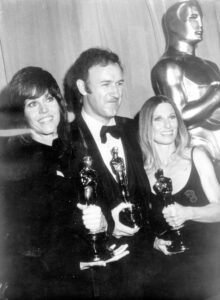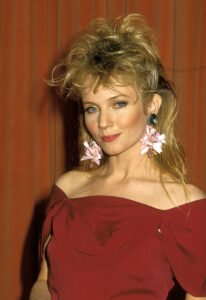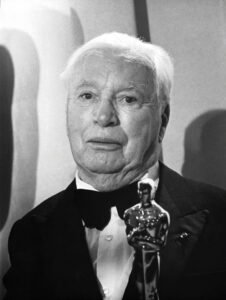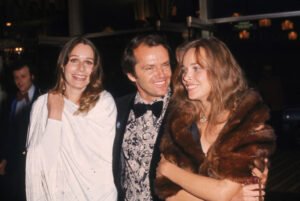Looking back, the 1972 Oscars feels like a snapshot of a changing Hollywood.
The 1972 Oscars wasn’t just an awards night; it was a shining celebration of cinema that truly reflected the spirit of a past era.
Lately, I feel like the Oscars have become less exciting. It seems more about showing off than truly celebrating people and their achievements.
The excitement and pride in other people’s success seems to have faded, making the ceremony feel less genuine and memorable than it once did.
In my view, the 1972 Academy Awards was something completely different.

The night was filled with unforgettable moments that set a high standard for every Oscar ceremony after it. Looking back at that night feels like stepping into a time capsule of Hollywood’s golden era. The photos from that night tell a story of pure glamour and star power.
So, what made the 1972 Oscars so special?
A Historic Year The 44th Academy Awards honored some of the best films in cinema. The French Connection dominated the night, winning five Oscars, including Best Picture, Best Director for William Friedkin, and Best Actor for Gene Hackman, who played Detective Jimmy “Popeye” Doyle.
The film’s gritty realism and thrilling car chases raised the bar for thrillers, and its success at the Oscars made its place in movie history solid. It was a real movie with real actors and a great story – something we don’t see as much nowadays.

Gene Hackman was so surprised by his win that he couldn’t remember getting up from his seat to walk to the stage. On stage, he thanked his drama coach and his mother but quickly became emotional.
Another great movie, A Clockwork Orange, was also nominated that year. Stanley Kubrick’s controversial yet admired film added to the ceremony’s cultural importance. Fiddler on the Roof brought audiences back to musicals with its moving score and heartwarming story.
The Last Picture Show, Peter Bogdanovich’s coming-of-age film, earned eight Oscar nominations. Its black-and-white cinematography and nostalgic look at small-town life stood out. Cloris Leachman and Ben Johnson won Best Supporting Actress and Actor for their unforgettable performances.
No Hotpants in Sight The 1972 Oscars brought back the glamour of Hollywood’s golden age.

Gone were the feathers, fringe, and hippie headbands of recent years. This time, stars wore flowing chiffons, luxurious brocades, and plenty of diamonds and furs.
Some reporters noted that there were no hotpants outfits, although Jane Fonda stood out in one of the few pantsuits on the red carpet.
One reporter also mentioned that many women showed “plenty of cleavage,” adding to the evening’s glamorous vibe.
Protests Outside the Los Angeles Music Center, crowds of fans waited to catch a glimpse of the stars arriving for the ceremony.
But there was also tension, as protests broke out nearby. One protest focused on Clint Eastwood’s Dirty Harry, a film criticized for promoting police violence, even though it wasn’t nominated for any awards. One sign read, “Dirty Harry is a Rotten Egg.”
Shirtless & Covered in Chains Music played a huge role in making the 1972 Oscars memorable.
Isaac Hayes made history by becoming the first African American to win Best Original Song for his hit “Theme from Shaft.” His electrifying performance, shirtless and wearing chains, was a highlight of the night.

Hayes commanded the stage as he played the keyboard, surrounded by dancers. The show reached its peak when he disappeared under the stage in a cloud of smoke, leaving the audience in awe. It was a moment of pure Oscar magic!
Betty Grable’s Farewell One of the evening’s most memorable moments came when Betty Grable made one of her last public appearances.
Grable, famous for her iconic pin-up poster and as one of Hollywood’s highest-paid actresses in the 1940s, had a huge impact on film. She once said, “I became a star for two reasons, and I’m standing on them.”
At the Oscars, Grable wore a stunning turquoise gown with silver spangles. Sadly, this would be one of her final public appearances. She passed away the following year at the age of 56.
A Frail, White-Haired Pioneer Among the stars that night, one figure stood out. Charlie Chaplin, a film pioneer who had been banned from Hollywood two decades earlier, made a surprise appearance.

Chaplin, at 82, was honored for his contributions to cinema. The audience gave him a 12-minute standing ovation, the longest in Academy history.
He thanked the Academy, saying, “Thank you for the honor of inviting me here. You are wonderful, sweet people.”
Old and New The 1972 Oscars was a mix of old and new Hollywood.
Stars like Jane Russell, Macdonald Carey, and Jane Powell Kelly shared the spotlight with new actors like Jane Fonda, Jack Nicholson, Gene Hackman, Cloris Leachman, and Raquel Welch.
The red carpet showcased pure elegance, with stars wearing glamorous gowns and tuxedos, exuding the timeless charm of Hollywood’s golden age.
One photo from that night stands out: it shows Raquel Welch, Cloris Leachman, and Gene Hackman together.
Gene Hackman was smiling after winning Best Supporting Actor, Cloris Leachman held her Oscar for The Last Picture Show, and Raquel Welch radiated in her beautiful dress. Welch, who was also a presenter, represented the changing roles of women in Hollywood.

Behind the Picture This picture represents a turning point in Hollywood.
Leachman’s win showed the shift to more complex, character-driven stories in films. Hackman, Leachman, and Welch’s image reflects the broader cultural changes of the early 1970s, as Hollywood began to embrace diverse storytelling.
The 1972 Oscars will forever hold a special place in film history!




